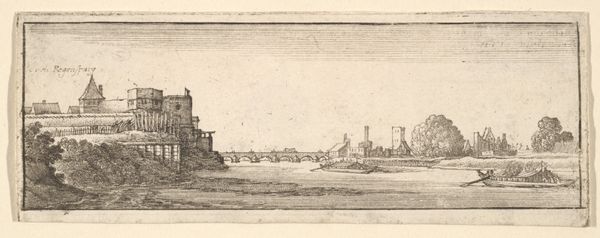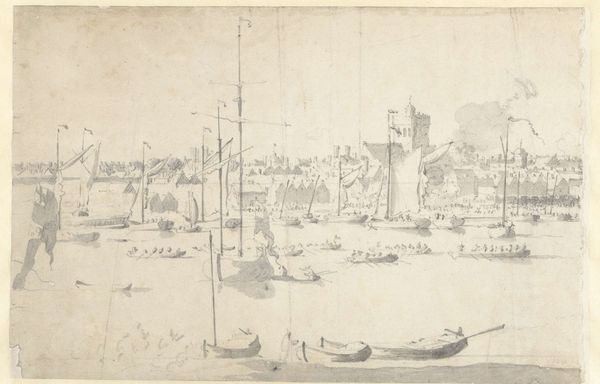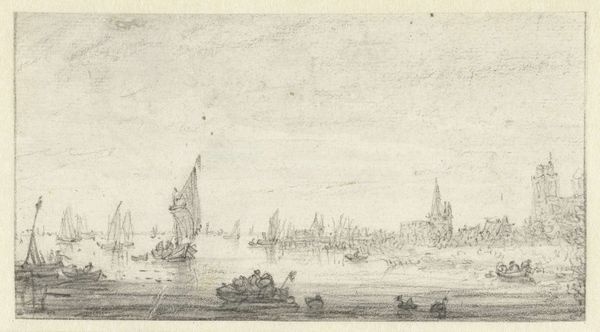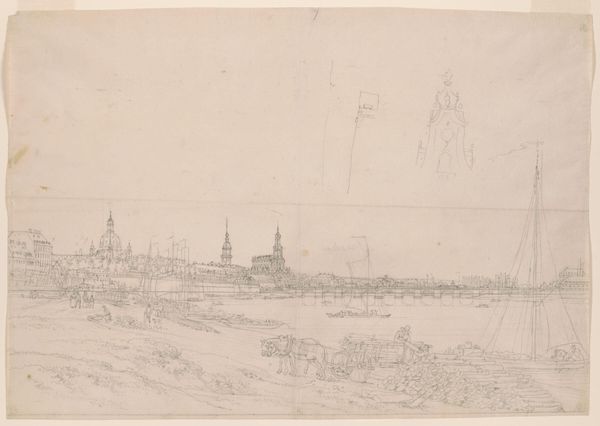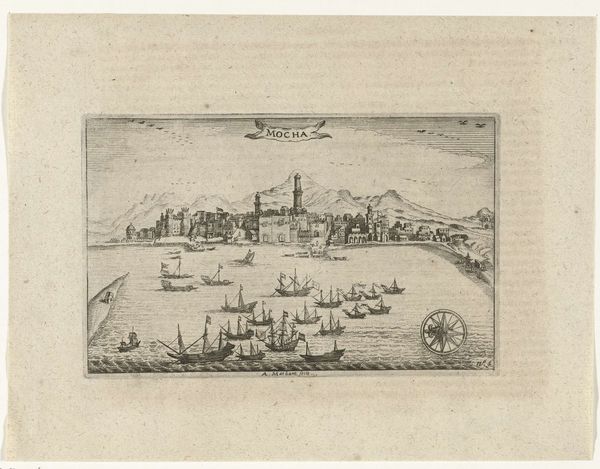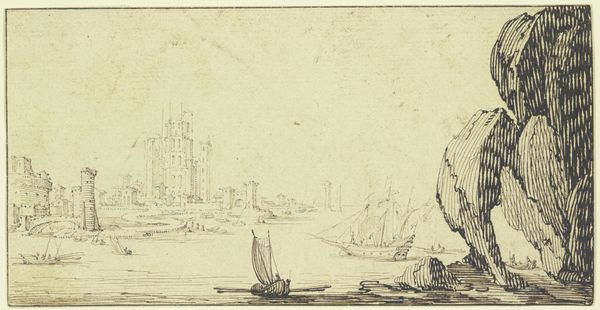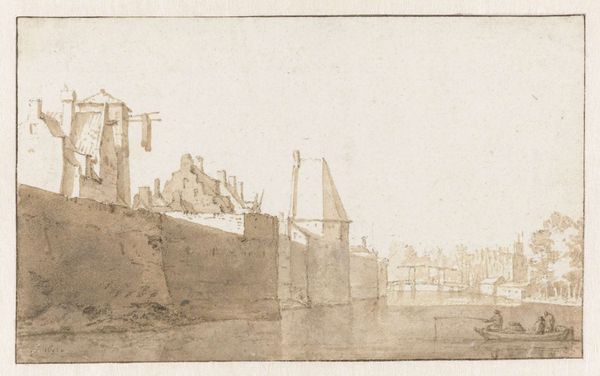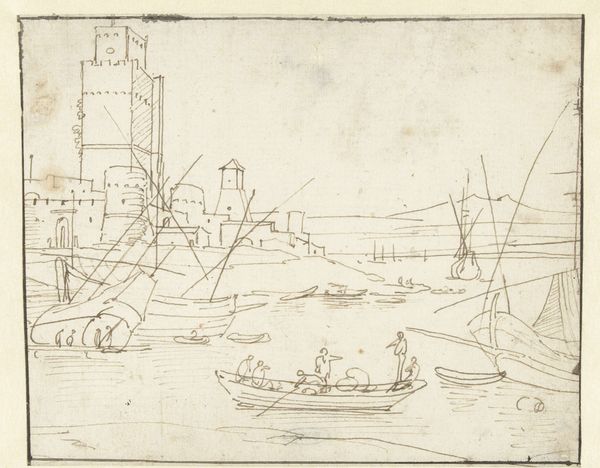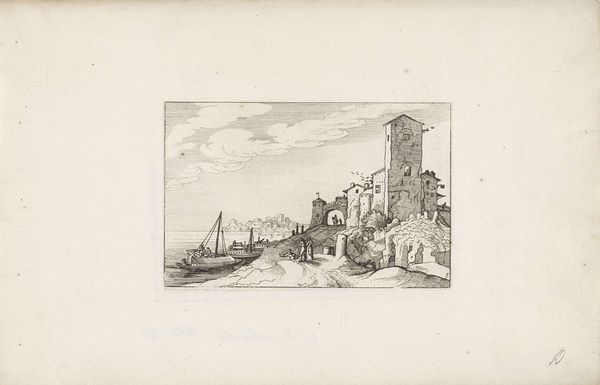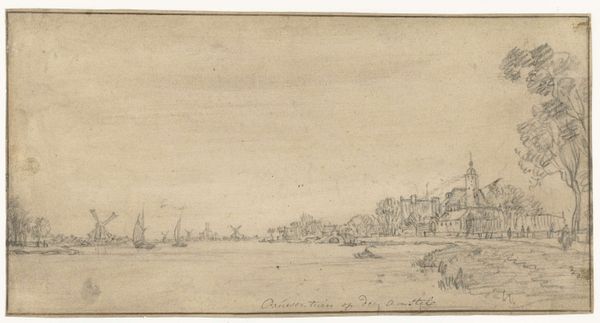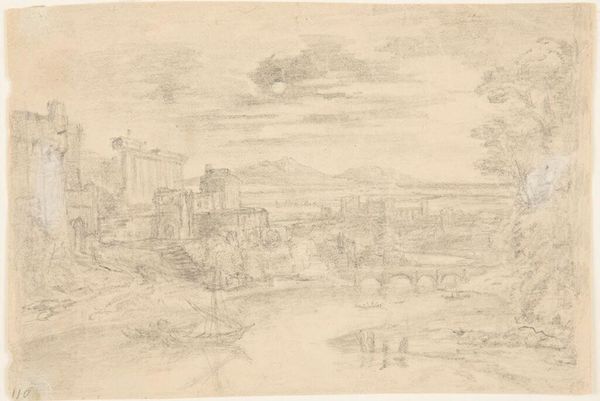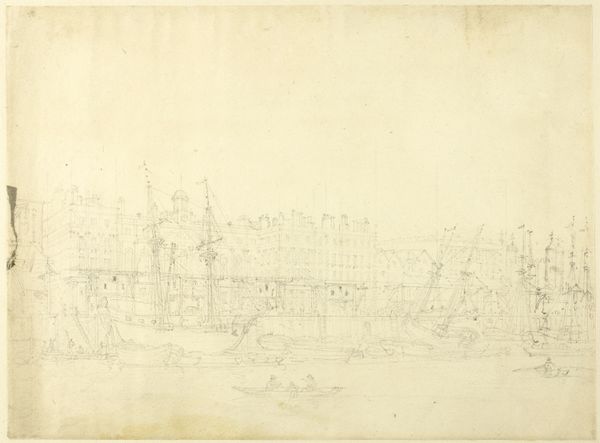
drawing, ink, pencil
#
drawing
#
landscape
#
ink
#
ancient-mediterranean
#
pencil
#
cityscape
Dimensions: height 211 mm, width 652 mm
Copyright: Rijks Museum: Open Domain
Editor: So, this is "View of the City of Tripoli" by Adriaen Matham, made in the 17th century. It’s a drawing using ink and pencil. I’m immediately struck by the overall flatness and horizontal composition, but with this intriguing level of detail within the cityscape itself. What jumps out at you? Curator: What arrests my gaze are the carefully placed vertical elements - the minarets, towers, and masts - rising assertively against that flat horizon. Observe how Matham uses subtle shifts in line weight to define the forms. The marks themselves have created the architecture. Note, also, the strategic placement of those three primary vessels, serving almost as focal points. Do you agree? Editor: Yes, I see it now! The contrast between the solid, darker ships and the fainter architectural forms does guide the eye. Why do you think the artist chose such a subdued palette? Curator: I would suggest Matham’s limited tonal range emphasizes line and form. He may be drawing attention to the meticulous construction of the drawing itself – a formal exercise in perspective and representation. The faintness creates an interesting ethereal feeling, as well. Editor: That's a fascinating point. It’s like he’s prioritizing the structure and composition of the scene, rather than a realistic depiction. Curator: Precisely. Matham transforms an actual place into a sophisticated study of line, light, and form, reflecting broader trends within 17th-century Dutch art that favored structure and a strong use of formalism. Editor: Thanks, that was super insightful; looking at the elements themselves lets you understand so much more about the artwork! Curator: My pleasure; now, you'll probably apply formalism yourself in future works you study!
Comments
No comments
Be the first to comment and join the conversation on the ultimate creative platform.


